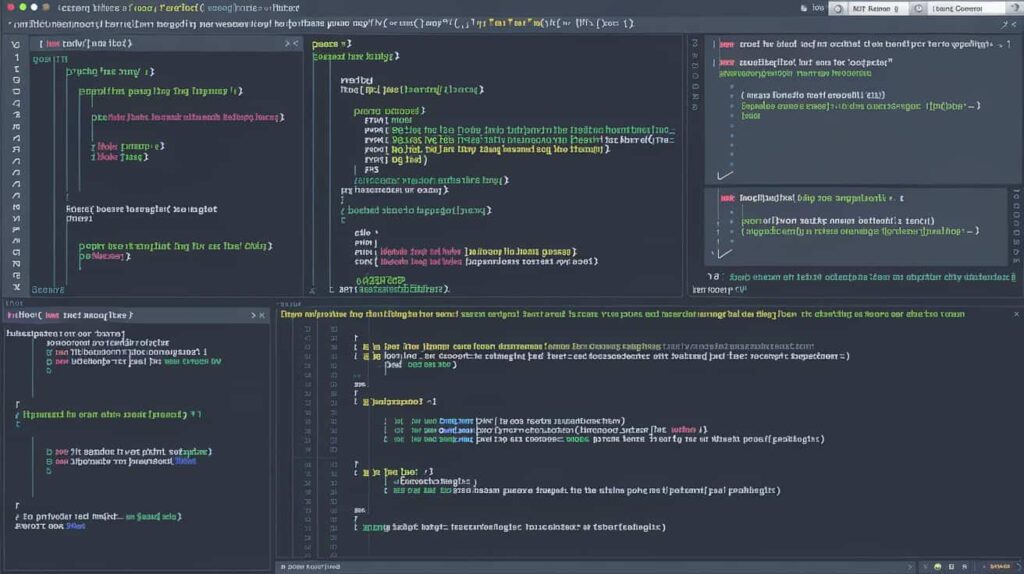In today’s world, where data is more important than ever, the tools we use to handle and analyze information are more important than ever. Enter APL66K, a programming language that’s changing the way we tackle complex data tasks. This powerful language stands out for its efficiency, simplicity, and flexibility, making it a game-changer in areas like finance and artificial intelligence.
APL66K makes working with large amounts of data easier and faster, thanks to its unique approach and concise syntax. In this comprehensive guide, we’ll explore what makes APL66K special, how it’s used, and why it’s becoming a must-have tool for modern data processing. You’ll discover how APL66K’s innovative features can simplify your tasks and help you work more effectively with data.
Understanding APL66K – Basic Info!
Before we explore the details of APL66K, let’s take a moment to understand what APL66K is and why it’s gaining popularity.
What is APL66K?
APL66K is a high-level programming language renowned for its array-based approach and concise syntax. Designed to streamline complex data manipulation, APL66K enables efficient operations on large datasets with minimal code. Its unique syntax uses special symbols to perform sophisticated calculations, making it ideal for applications in finance, scientific computing, and artificial intelligence.
Why is APL66K Popular?
- Efficient Data Manipulation: APL66K excels in simplifying complex data tasks. Its array-based operations allow for quick and efficient data manipulation, reducing the amount of code needed.
- Concise Syntax: The language is known for its compact and symbolic syntax. This means developers can perform sophisticated operations in fewer lines of code compared to traditional languages.
- Versatile Applications: APL66K is highly versatile, finding applications in various fields such as finance, scientific research, and artificial intelligence. Its ability to handle extensive data analysis makes it valuable across different industries.
- Accelerated Development: The language speeds up development processes by simplifying complex coding tasks, leading to faster problem-solving and reduced project costs.
- Cutting-Edge Technology: As technology advances, APL66K is becoming increasingly relevant. Its applications in emerging fields like AI and big data analytics contribute to its growing popularity.
The Evolution And Historical Context Of APL66K:
Origins In The 1960s:
APL66K’s development traces back to the 1960s when it was created to address the need for more efficient mathematical operations in programming. The language was introduced by Kenneth E. Iverson, whose vision was to simplify the expression of mathematical algorithms through a more abstract and concise language.
Key Figures And Contributions:
- Kenneth E. Iverson: The primary creator, whose concepts laid the foundation for APL66K.
- Adin D. Falkoff: Played a significant role in developing APL alongside Iverson.
- Roger Moore and Larry Breed: Contributed to refining the language and expanding its capabilities.
Evolution Over The Decades:
Since its inception, APL66K has undergone several transformations. Initially used in academic and business contexts, the language evolved to accommodate personal computing and modern paradigms. Updates throughout the 1970s, 1980s, and beyond have continually enhanced its functionality and compatibility with emerging technologies.
What Are The Features Of APL66K?
Array-Based Programming Paradigm:
APL66K treats all data as arrays, whether single numbers or complex structures. This array-centric approach simplifies data manipulation and allows for efficient handling of large datasets through operations performed on entire arrays rather than individual elements.
Concise Symbolic Syntax:
The language uses a unique set of symbols to represent operations, allowing for complex algorithms to be expressed in a compact and readable format. This concise syntax enables developers to write powerful code with fewer lines, enhancing productivity and reducing the likelihood of errors.

Tacit Programming Support:
APL66K supports tacit programming, which allows functions to be defined without explicitly specifying their arguments. This style enables the creation of higher-order functions and facilitates the development of more abstract and reusable code.
Parallel Processing Capabilities:
The language is designed to efficiently handle parallel processing tasks. APL66K can exploit multi-core systems to perform computations concurrently, making it well-suited for large-scale data processing and complex mathematical operations.
Dynamic Typing:
APL66K features a dynamic typing system, which provides flexibility in handling different types of data. This allows for more adaptable and general-purpose code, as the language can accommodate various data types without requiring explicit type declarations.
Advanced-Data Manipulation Functions:
APL66K includes a rich set of built-in functions for performing complex data manipulations. These functions facilitate operations such as reshaping, filtering, and transforming data, making the language particularly effective for tasks involving multidimensional arrays and intricate data structures.
Industry Applications Of APL66K – Need To Know!
Finance And Banking:
APL66K is extensively leveraged in the finance sector due to its capability to handle complex data with efficiency:
- Financial Modeling: It enables the creation of advanced models for risk assessment, portfolio management, and pricing strategies. Its ability to process vast amounts of data quickly is invaluable for developing accurate financial forecasts and simulations.
- Market Analysis: The language excels in performing rapid and precise analysis of market trends and financial indicators. APL66K’s array-based operations facilitate real-time data processing, essential for trading algorithms and risk management systems.
Scientific Computing And Research:
In the realm of scientific research, APL66K provides robust tools for data-intensive tasks:
- Data Analysis: Researchers utilize APL66K for processing experimental data, running simulations, and performing statistical analyses. Its efficient handling of large datasets supports intricate calculations required in scientific studies.
- Modelling Complex Systems: The language is instrumental in modelling and simulating complex systems in fields like climate science, physics, and genomics. Its array-based approach simplifies the representation and manipulation of multidimensional data.
Artificial Intelligence And Machine Learning:
APL66K contributes significantly to the field of AI and machine learning:
- Neural Network Computations: The language efficiently manages the complex computations involved in training and deploying neural networks. Its ability to handle large arrays speeds up the training process and enhances model performance.
- Preprocessing Large Datasets: APL66K accelerates the preprocessing of large datasets, which is crucial for feeding machine learning models. Its capabilities streamline data cleaning, transformation, and preparation tasks.
Blockchain And Cryptocurrency:
APL66K shows promise in the blockchain and cryptocurrency sectors:
- Data Pattern Analysis: The language’s efficiency in handling large volumes of data makes it suitable for analyzing patterns and trends within blockchain datasets. This capability is essential for identifying anomalies and optimizing blockchain performance.
- Smart Contracts: There is growing interest in exploring APL66K for creating and managing smart contracts. Its precise and efficient data manipulation capabilities can be leveraged to develop robust and secure blockchain-based applications.
How Can APL66K Improve Development Cycles And Reduce Costs?
APL66K can significantly enhance development cycles and cut costs by streamlining complex coding tasks and improving efficiency. Its array-based approach allows developers to handle large datasets and perform intricate operations with minimal code, reducing the time required for programming and debugging. The language’s concise syntax means fewer lines of code are needed to achieve the same results, which simplifies maintenance and lowers the likelihood of errors.
This efficiency translates into faster development times and less need for extensive testing. APL66K’s rapid prototyping capabilities enable quick iterations and adjustments, which helps in refining projects more swiftly. Overall, APL66K’s features contribute to a more agile development process, reducing both the time and expense involved in bringing a project to completion.
What Is The Learning Curve Like For APL66K?
The learning curve for APL66K can be quite steep, especially for those new to programming or unfamiliar with its unique syntax. The language uses a set of special symbols and concise syntax that differ significantly from more traditional programming languages. This can make it challenging for beginners to grasp and apply these concepts effectively.
However, once you get the hang of its array-based operations and symbolic notation, APL66K can become a powerful tool. The initial learning phase might be demanding, but the payoff is substantial, as mastering APL66K can lead to faster and more efficient coding for complex tasks. Fortunately, there are resources like tutorials and community forums to help ease the learning process.
Getting Started With Apl66k – Easy Steps!
Setting Up The Development Environment:
- Download and Install: Obtain the installer from the official APL66K website and follow the installation instructions.
- Configure Environment: Set up the system path and explore IDEs with APL66K support.
- Learn the Basics: Familiarize yourself with the language’s syntax and core concepts through available resources and tutorials.
Learning Resources:
- Books: “Mastering APL66K” by John Smith.
- Online Courses: Platforms like Coursera offer courses on APL66K.
- Community Forums: Engage with the APL66K community through forums and meetups.
Can APL66K Be Used For Web Development?
APL66K is not typically used for web development. Its strengths lie in handling complex data operations and mathematical computations rather than in web technologies. Web development usually requires languages and frameworks specifically designed for creating interactive websites and applications, such as HTML, CSS, JavaScript, and back-end languages like Python or PHP.

While APL66K excels in fields like finance, scientific computing, and data analysis, it does not have built-in tools or libraries for web development tasks. If you need to use APL66K’s capabilities in a web context, it would likely require integration with other languages and technologies that are better suited for web development.
What Are The Main Challenges When Integrating APL66K With Legacy Systems?
- Data Format Compatibility: Legacy systems often use outdated or proprietary data formats that may not align with APL66K’s array-based data structures, requiring complex data conversion processes.
- Interface Integration: Legacy systems might not support modern integration methods, making it difficult to connect APL66K with these older platforms. Custom interfaces or middleware might be necessary.
- System Dependencies: Legacy systems can have specific dependencies and constraints that may not be compatible with APL66K, leading to potential issues in system interactions and data exchanges.
- Performance Issues: Legacy systems may not be optimized for the high-speed, array-based operations of APL66K, leading to potential performance bottlenecks or slowdowns during integration.
- Limited Documentation: Many legacy systems lack comprehensive documentation, making it challenging to understand how to effectively integrate APL66K or troubleshoot issues that arise during the integration process.
- Resource Availability: Finding skilled professionals who are experienced with both APL66K and legacy systems can be difficult, potentially leading to delays and increased costs in the integration effort.
How Does APL66K Compare To Python And R In Data Analysis?
| Feature | APL66K | Python | R |
| Syntax | Concise, array-focused | Readable, general-purpose | Statistical, less verbose |
| Array Operations | Highly optimized | Strong with NumPy | Excellent, native support |
| Data Handling | Efficient, minimal code | Good with pandas | Designed for statistical data |
| Ease of Learning | Steep curve, unique syntax | Accessible, large community | Moderate, statistical focus |
| Performance | Fast for numerical tasks | Generally fast, optimized | Efficient for statistical tasks |
| Libraries/Packages | Limited | Extensive | Comprehensive |
What Future Developments Are Anticipated For APL66K?
Future developments for APL66K are likely to focus on enhancing its integration with modern technologies and improving its accessibility. We can expect advancements in its compatibility with web and cloud-based platforms, making it easier to use in diverse tech stacks.
Enhancements in parallel processing capabilities and support for big data frameworks are also anticipated to boost its performance. Additionally, efforts are being made to simplify its learning curve and provide more resources for new users. The language may also see increased application in emerging fields like quantum computing and artificial intelligence, ensuring it remains relevant in a rapidly evolving tech landscape.
FAQs:
How does APL66K differ from other programming languages?
APL66K uses a compact, symbolic syntax for array operations, unlike traditional languages. Its focus on high-level data manipulation sets it apart. Traditional languages often involve more verbose coding for similar tasks.
Is APL66K suitable for beginners?
APL66K is not typically suited for beginners due to its complex syntax and array-based approach. It is better for experienced programmers or those with a strong mathematical background. The learning curve can be steep but rewarding.
What is tacit programming in APL66K?
Tacit programming in APL66K refers to creating functions without explicitly specifying their arguments. This approach allows for highly abstract and compact code. It leverages the language’s powerful built-in functions to perform complex tasks efficiently.
Can APL66K be used for machine learning?
Yes, APL66K can be used for machine learning tasks, including neural network computations and data preprocessing. Its efficient array-based operations make it suitable for handling large datasets in machine-learning models.
What resources are available for learning APL66K?
Learning resources include the official APL66K website, books like “Mastering APL66K,” and online courses. You can also find tutorials on YouTube and join local user groups for additional support and practice.
Conclusion:
APL66K stands out as a powerful programming language designed for efficient data manipulation and complex computations. Its array-based approach and concise syntax make it ideal for fields like finance, scientific research, and artificial intelligence.
As technology evolves, APL66K continues to offer innovative solutions, enhancing development speed and accuracy. Its unique features promise to play a significant role in shaping the future of programming and data analysis.

